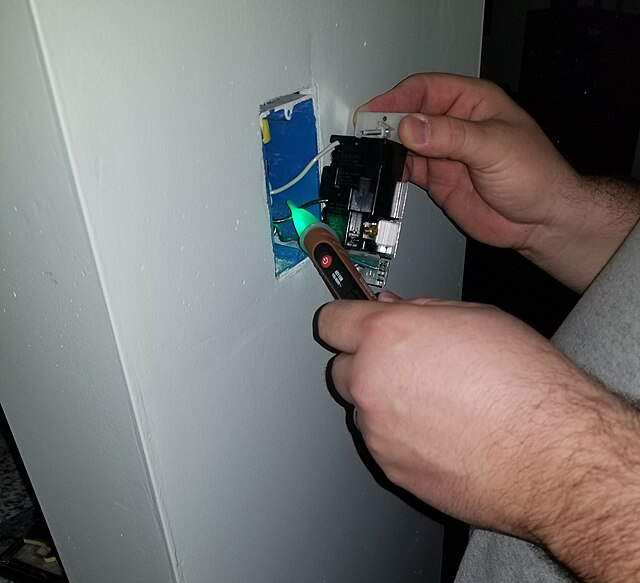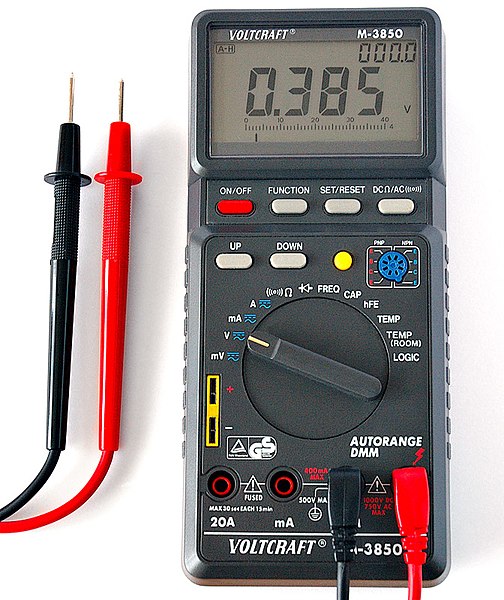A test light, test lamp, voltage tester, or mains tester is a piece of electronic test equipment used to determine the presence of electricity in a piece of equipment under test. A test light is simpler and less costly than a measuring instrument such as a multimeter, and often suffices for checking for the presence of voltage on a conductor. Properly designed test lights include features to protect the user from accidental electric shock. Non-contact test lights can detect voltage on insulated conductors.
Neon test lamp for line voltages
Non-Contact AC Voltage Detector
A voltage tester with three lamps to give an approximate indication of voltage magnitude
UK GS38-compliant test lamp, with separately-fused test prods and current-limiting resistor, suitable for use up to 1000V
Electronic test equipment
Electronic test equipment is used to create signals and capture responses from electronic devices under test (DUTs). In this way, the proper operation of the DUT can be proven or faults in the device can be traced. Use of electronic test equipment is essential to any serious work on electronics systems.
Tektronix 7854 oscilloscope with curve tracer and time-domain reflectometer plug-ins. Lower module is a mainframe of the series Tektronix TM500 and has a digital voltmeter, a digital counter, an old WWVB frequency standard receiver with phase comparator, and function generator.
Keysight commercial digital voltmeter checking a prototype
Voltcraft M-3850 portable multimeter
A multimeter with a built in clamp facility. Pushing the large button at the bottom opens the lower jaw of the clamp, allowing the clamp to be placed around a conductor (wire). Depending on sensor, some can measure both AC and DC current.








